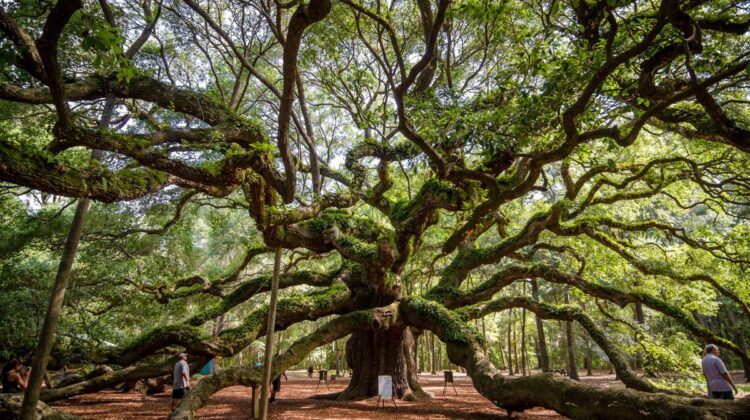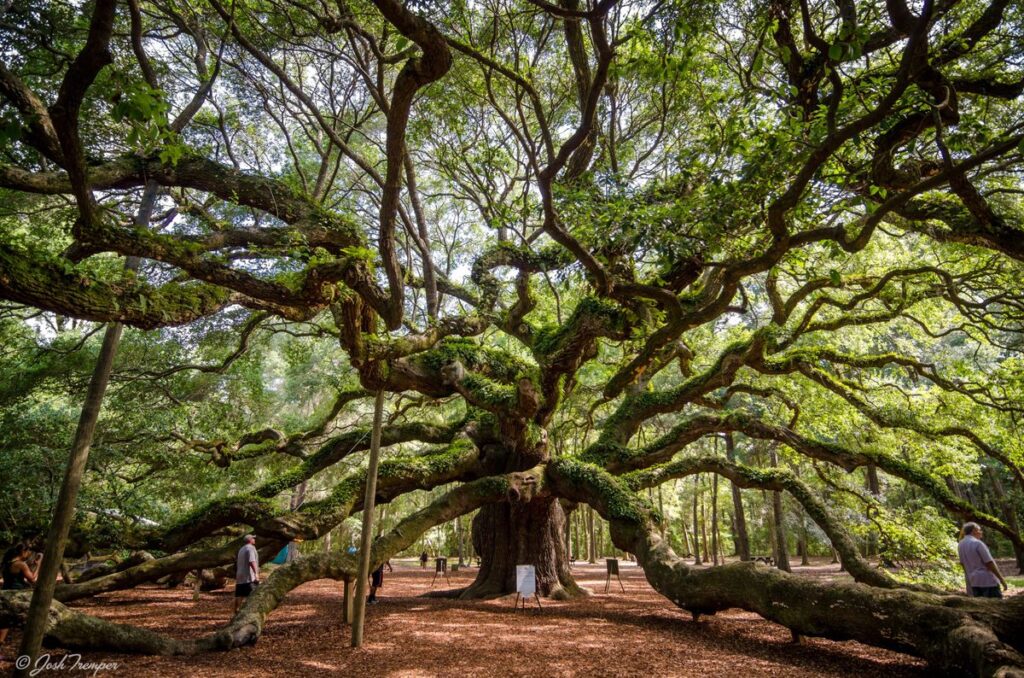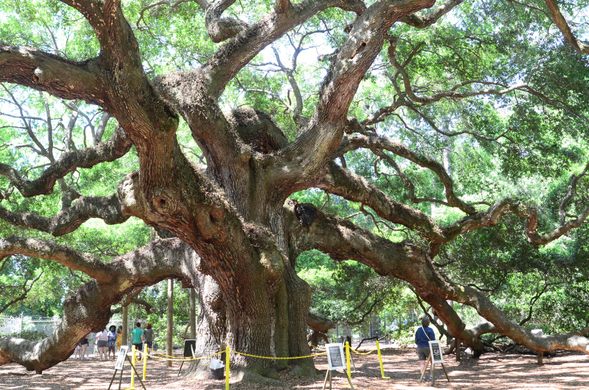
Towering over Johns Island, South Carolina, stands the Angel Oak, a majestic live oak tree that has become a legend in its own right. Estimated to be between 400 and 500 years old, this ancient giant has witnessed centuries of history, weathering storms, human development, and the ever-changing landscape around it.
A Powerful Presence

The Angel Oak’s sheer size is awe-inspiring. Its sprawling branches extend outward for an incredible 187 feet, creating a canopy that shades an area larger than a football field. The trunk itself is a marvel, measuring a staggering 28 feet in circumference at its base.
A Survivor Through the Ages
Standing sentinel over the centuries, the Angel Oak has endured countless challenges. Hurricanes, a constant threat in the region, haven’t fazed this sturdy survivor. In fact, its low, sprawling form is believed to be an adaptation to withstand the powerful winds that batter the Carolina coast.
A Symbol of Resilience

The Angel Oak’s story is more than just its age and size. It’s a testament to the enduring power of nature and the importance of conservation. In the past, development threatened the tree’s existence. Thankfully, a community effort, fueled by public outcry and conservation groups, successfully protected this natural treasure. Today, the Angel Oak stands proudly within Angel Oak Park, a place where visitors can come to marvel at its grandeur and appreciate its historical significance.
A Place of Beauty and Connection

Angel Oak Park offers more than just a glimpse of this legendary tree. It’s a beautiful space where families can picnic, photographers can capture stunning images, and visitors can connect with the natural world. The park also hosts events like “Evening Under the Angel Oak,” bringing the community together to celebrate this enduring symbol of resilience.
Whether you’re a nature enthusiast, a history buff, or simply someone who appreciates the beauty of the natural world, the Angel Oak is a sight to behold. It’s a reminder of the power and longevity of nature, and the importance of preserving these irreplaceable wonders for generations to come.

Leave a Reply